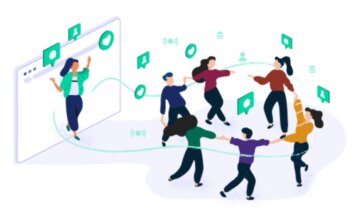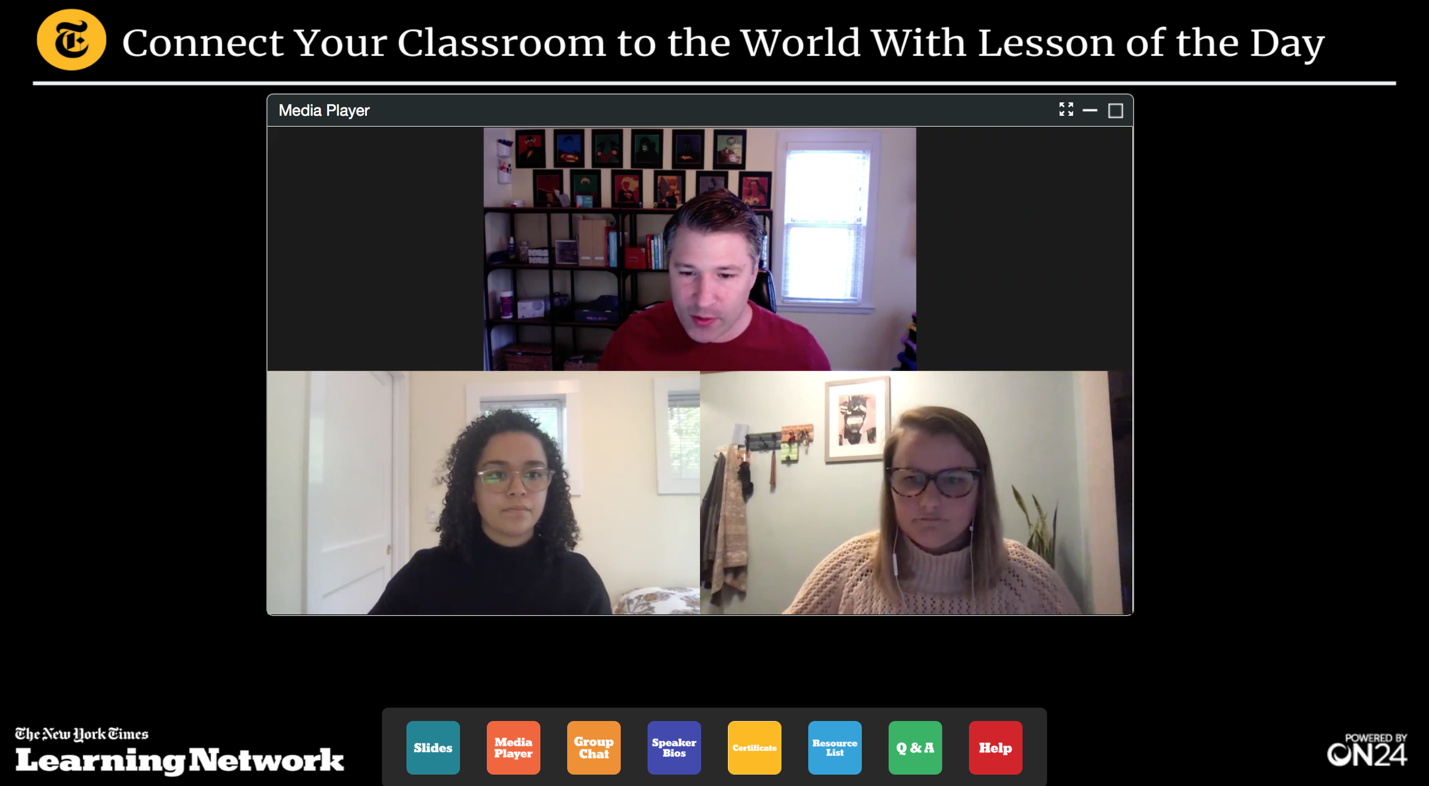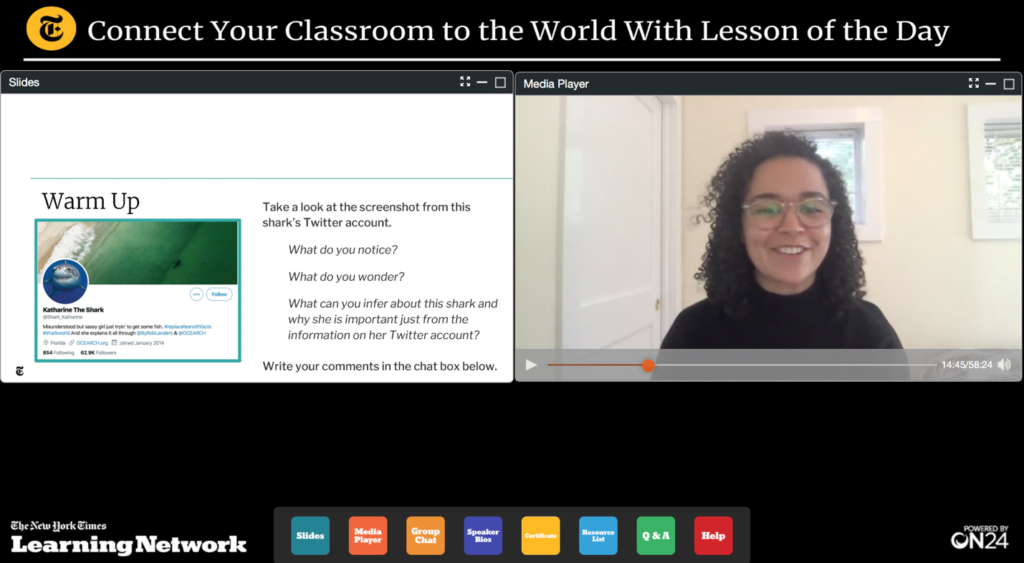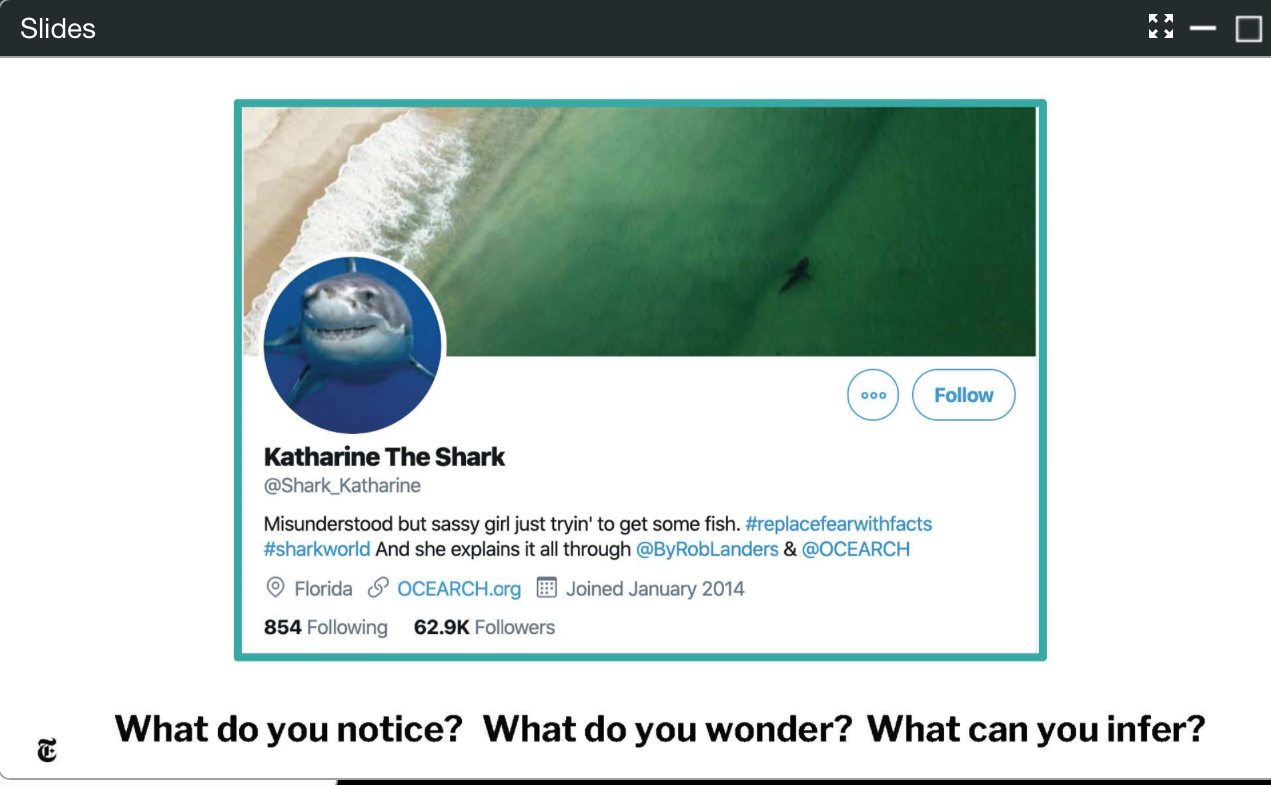Three Webinar Lessons Learned from The Learning Network’s Study Session

In response to COVID-19, schools across the United States have shuttered their buildings for the remaining 2019-2020 school year. But that doesn’t mean students and teachers have to give up on learning. In fact, many teachers are looking for ways to connect with classes and promote distance learning.
But before those remote classes can truly hit their stride, teachers need to study up on how to run virtual classes. Enter The Learning Network, a New York Times-created resource focused on helping people teach and learn online.
Recently, The Learning Network held an event explaining its Lesson of the Day program. The premise of the webinar was to both show how educators can integrate Lesson of the Day in classes and how teachers can adjust the Lesson of the Day format to fit their students and curriculum.
But The Learning Network also provided some lessons webinar practitioners can use in their day-to-day events. Let’s take a look:
Widen Your Audience

Though most of the participants were teachers or other types of educators, a few parents and life-long learners also joined the broadcast. The hosts from The Learning Network encourage this for two reasons:
- When learning is incorporated into everyday activities, students see that it can be fun and doesn’t have to have negative feelings and associations, which they hope helps students see learning as a positive experience and something they want to continue.
- Everyone should feel encouraged to learn throughout life because it keeps the mind sharp — especially as we age.
Create A Unique Format (And Stick to It)

The Learning Network’s overall demo and its Lesson of the Day process are entirely unique to The Learning Network’s services. And these two elements both dictate the format of the webinar and its content. This means The Learning Network has a powerful format it can use to address a specified audience.
The Learning Network’s three-person panel introduced participants to Lesson of the Day, its basic formula and its guiding philosophy throughout the hour-long webinar. Participants saw a few example lesson plans and learned how to incorporate Lesson of the Day’s fundamentals into a larger lesson topic.
For example, all of the Lessons of the Day are based on an intriguing article recently published in The New York Times. Each lesson opens with an overview outlining the goals of the lesson and previews the activities within the plan.
Then, it moves on to a short warmup activity asking students to do some pre-thinking and to activate any prior knowledge on the topic. After the warmup, students read the article and then have questions for writing and discussions. These are meant to check for understanding and ask students to think critically and more in-depth about the topic.
Every Lesson of the Day concludes with “Going Further.” This is a 15-20 minute activity that extends learning beyond the single article. It may ask students to read a related article, watch a short video or complete a mini-project related to the topic. Finally, The Learning Network encourages educators to pick and choose the parts of the lessons that work for them.
Encourage Participation
Finally, each Lesson of the Day makes use of its comments section. For The Learning Network’s purposes, the comment section provides teachers with the opportunity to share how they used the lesson in their classroom and provide feedback, tips or suggestions to help others.
During the webinar presentation, attendees were able to participate in a short example warmup activity that asked participants to analyze an image. The exercise asked them what they noticed, wondered about and inferred from the photo. The topic for this webinar: Katherine the Shark’s Twitter Account!

Participants were asked to post their thoughts and comments to the group chat feed. Comments included noticing that she’s swimming close to shore, that she’s smiling in her profile picture, wondering why she’s misunderstood and inferring that she’s looking to change how people think about her.
In addition to doing the example warmup with Katherine The Shark, the staff from The Learning Network also took participants through warm-up activities about technology Easter Eggs (the kind hidden in software, not around the house during Easter) and the intro video to the Syrian version of Sesame Street. Participants were asked to try an Easter Egg connected to Google, and to infer about the values, lifestyles and points of view in the Syrian Sesame Street video.
These are great ways to encourage attendees to participate in the webinar and interact with one another. These activities also underscore both The Learning Network’s unique offering and ways participants can interact with material over a digital medium.
See The Learning Network for Yourself
The Learning Network provides free current classroom resources for every school day since they began in 1998. These resources contain lesson plans, writing prompts, activities, news quizzes and educational contests based on New York Times journalism.
Having received plenty of feedback throughout the years, The Learning Network resources are most commonly used in three ways:
- Connect the classroom to the world: One of the main goals of The Learning Network is to help students be aware of current events and understand how they’re relevant to them in their own lives. To do this, The Learning Network produces materials in five different areas: Current Events Lessons, News Quizzes, Geography Quizzes, Lesson Plans and Teenagers in The Times.
- Give students a voice – and strengthen literacy skills along the way: Through the writing prompts and contests, staff at The Learning Network hear from students often and they highlight the best submissions on the site. Topics in this area include Student Opinion Questions, Picture Prompts, Word of the Day, Current Events Conversation, Contests, Our Writing Curriculum and Crosswords.
- Promote critical and creative thinking through multimedia: Because The New York Times is no longer just a black and white hard copy newspaper, the staff at The Learning Network leverage the many types of multimedia available and find ways to build them into their topics. These prompts include What’s Going On in This Picture?, What’s Going On in This Graph? and Film Club.
The Learning Network can be accessed through The New York Times website or by clicking here. You can also check out their many professional development videos and past webinars on its YouTube channel.